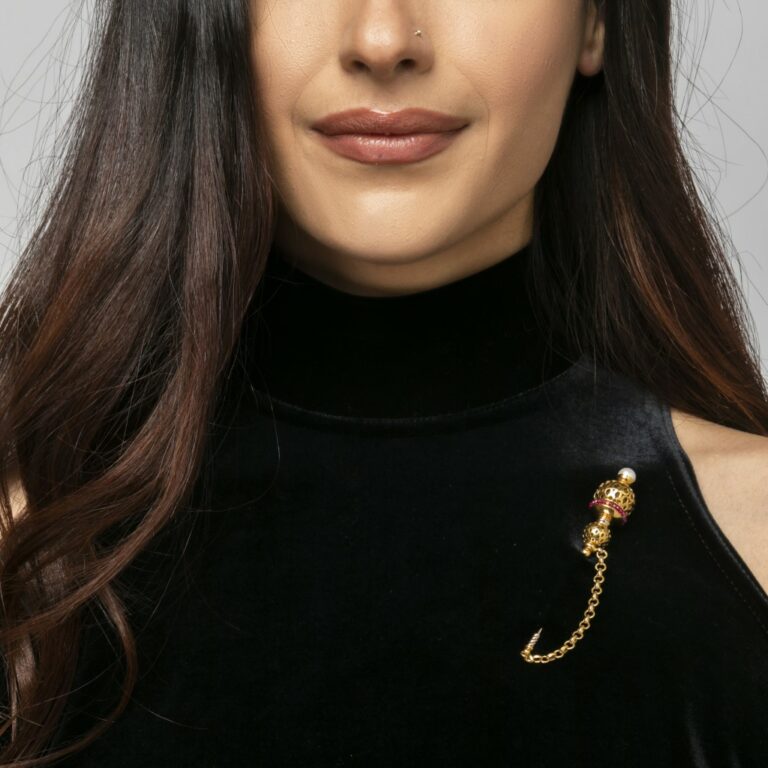The brooch is perhaps the most useful of jewellery, along with cufflinks. It is a piece of jewellery that on the front side has representations of all kinds decorated with gemstones or made of precious metals without stones, and on the back side it has a needle and usually a clasp so that it can be applied to clothes or wherever else we want to pin it to decorate an object or even our hairstyle.
Brooches evolved from the Roman tunic clasp, the so-called fibula, which was similar to the present-day safety pin, and was worn in the regions that were part of the Roman Empire. In ancient Greece, men and women wore brooches on their clothing. In regions with a harsher climate, the brooch became the jewellery of choice as it usually served as a fastener to hold a coat such as a cloak or cape. Until the 19th century, brooches were widely used as a sign of the wealth of the person wearing them, and were an integral part of the dress of members of royal and aristocratic families. Gradually, brooches were replaced by buttons and other fastenings, but they never lost their popularity. On the contrary, they became a valuable accessory for expressing fashion and personal style.

Brooches come in countless designs and shapes. They may have the needle hidden at the back and the front covered with the decorative element, or they may have a long needle on top of which the decorative pattern is found. Over the centuries, and depending on the region, we find many different styles in the decorative element.
Different cultures used brooches as symbols that projected the most important features of their culture, and over the years the brooch became more and more an individual decorative element with options in designs chosen by each owner. Rosettes, circular flower-like designs are among the most timeless designs found in all cultures. Symmetrical repetitive patterns, representations of nature with animals and plants, and religious designs are some motifs that are often used. Stars, crescents, beautiful insects such as butterflies, hearts, scepters, birds, leaves , branches and flowers, gold bars and bows are some of the most popular designs for brooches.

Various manufacturing techniques and precious metals such as gold and white gold, colourful enamel, diamonds and coloured gemstones are the basic materials used in the manufacture of jewellery brooches. The brooch is one of the most classic and timeless jewellery worn by all ages, men and women, and by people with different styles as it is one of the most wearable jewellery that can add sparkle and style to all outfits. From the most morning outfit to the most formal, a brooch can be the item that will make a difference to your look. You can clip them to your shirt or jacket, tie your scarf with a brooch, use a glittery brooch to embellish your hairstyle or an accessory, slip the brooch through a chain and wear it as a pendant around your neck, choose to wear a brooch as a centerpiece of your outfit, or combine several brooches together, it is sure that brooches will take your style to the next level!
Eva Kountouraki GG, AJP, JBM
Gemologist-Adamantologist, Jewellery Consultant


